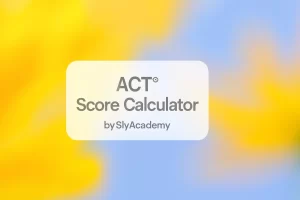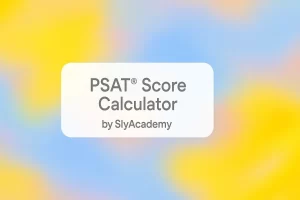Introduction: Why the Scientific Investigation FRQ Matters
If you’re preparing for the AP Biology exam, mastering the Free Response Questions (FRQs) is essential for achieving a high score. FRQ 3, the Scientific Investigation question, might only represent 6% of your total exam score, but it tests critical skills that colleges value: your ability to understand experimental design, interpret scientific data, and apply biological concepts to real-world scenarios.
This comprehensive guide draws from successful strategies used by students who achieved scores of 4 and 5 on their AP Biology exams. We’ll break down exactly what FRQ 3 entails, how to prepare effectively, and provide step-by-step strategies for earning each potential point.
Whether you’re struggling with scientific reasoning or simply looking to perfect your approach, this guide will help you develop the skills needed to confidently tackle the Scientific Investigation FRQ on exam day.
Understanding FRQ 3: Structure and Requirements
What Is the Scientific Investigation FRQ?
FRQ 3 presents you with a laboratory scenario and asks you to analyze different aspects of the investigation. Unlike the longer FRQs, this is a “short” free response question focused specifically on experimental design and interpretation.
Key Specifications
- Contribution to Exam Score: 6% of your total AP Biology score
- Recommended Time: 12 minutes
- Total Points Available: 4 points
- Question Format: Typically involves a laboratory scenario with multiple parts requiring you to:
- Explain underlying biological processes
- Justify experimental design elements
- Predict experimental results
- Provide biological justification for predictions
Scoring Breakdown
The 4 points for FRQ 3 are typically distributed as follows:
- Explain biological concepts, processes, or models (1 point)
- Justify experimental design choices (1 point)
- Predict experimental results (1 point)
- Justify predictions using biological principles (1 point)
Understanding this point distribution helps you allocate your time and effort appropriately when answering the question.
Pre-Exam Preparation Strategies
Master Common Laboratory Techniques
College Board frequently includes scenarios based on standard AP Biology laboratory procedures. Familiarize yourself with:
- Gel electrophoresis: Understanding how DNA fragments separate by size
- Bacterial transformation: The process of introducing foreign DNA into bacteria
- CRISPR and genetic manipulation: Basic principles and applications
- PCR (Polymerase Chain Reaction): How it amplifies DNA sequences
- Enzyme kinetics: Factors affecting enzyme activity
- Photosynthesis and cellular respiration investigations: Including measurements of oxygen/carbon dioxide
- Diffusion and osmosis experiments: Cell membrane behavior
- Hardy-Weinberg calculations: Population genetics applications
For each technique, ensure you understand:
- The basic principles behind how it works
- What variables can be manipulated
- How results are typically measured and interpreted
- Common applications in biological research
Study Past FRQ Examples
The College Board releases past exam questions that provide invaluable practice:
- Review released FRQs: Visit the AP Central website for officially released questions and scoring guidelines
- Search specifically: Use terms like “AP Bio gel electrophoresis FRQ” or “AP Biology scientific investigation FRQ” to find relevant examples
- Study scoring guidelines: Understanding how points are awarded will help you craft responses that meet expectations
Create a Study System
Develop a systematic approach to practicing scientific investigation questions:
- Create flashcards: For key experimental techniques and their applications
- Maintain a lab journal: Document key experimental designs and expected outcomes
- Form study groups: Discuss experimental scenarios and predict results together
- Time yourself: Practice answering FRQ 3-style questions within the 12-minute timeframe
Exam Day Approach: Before You Write
1. Strategic Reading
When you encounter FRQ 3 on exam day:
- Read the entire question first: Get a complete overview before starting your response
- Identify task verbs: Circle or underline words like “describe,” “identify,” “predict,” and “justify”
- Mark key information: Highlight or underline experimental variables, data provided, and specific biological concepts mentioned
- Note point values: Be aware of how points are distributed across parts of the question
2. Quick Knowledge Activation
Before writing your formal response:
- Brain dump: Quickly jot down relevant biological concepts that connect to the scenario
- Sketch relationships: If applicable, draw a quick diagram showing relationships between variables
- List variables: Identify independent, dependent, and control variables for the experiment
3. Response Planning
Spend 1-2 minutes organizing your thoughts:
- Outline your answer: Create a brief structure for addressing each component
- Check for completeness: Ensure you’ve planned to address every part of the question
- Allocate time: Plan approximately 3 minutes per point to ensure you complete all sections
Point-by-Point Strategies: Maximizing Your Score
Point 1: Explaining Biological Concepts, Processes, or Models
This point tests your understanding of the fundamental biology behind the experiment.
Effective strategies:
- Begin with definitions: If the question involves specific biological terms, define them clearly before proceeding
- Connect to core concepts: Link the scenario to fundamental AP Biology principles (Evolution, Energy, Information, Systems)
- Use proper terminology: Demonstrate understanding through precise biological vocabulary
- Consider scale: Address relevant levels of biological organization (molecular, cellular, organism, population)
- Be specific: Avoid vague statements; instead, provide specific details about the process or concept
Example: Instead of writing: “Photosynthesis makes energy for plants.”
Write: “Photosynthesis is the process by which plants convert light energy into chemical energy stored in glucose molecules. This occurs in chloroplasts through light-dependent reactions that produce ATP and NADPH, which power the Calvin cycle to fix carbon dioxide into carbohydrates.”
Point 2: Justifying Experimental Design
This point evaluates your understanding of the scientific method and experimental design principles.
Effective strategies:
- Clearly identify variables: Explicitly state independent, dependent, and controlled variables
- Explain control groups: Describe the purpose and importance of control groups in the experiment
- Discuss methodology: Explain why specific techniques or approaches are appropriate for testing the hypothesis
- Address sample size: Comment on how adequate sample sizes improve reliability of results
- Consider limitations: Acknowledge potential limitations in the experimental design when relevant
Example: Instead of writing: “The control group is important for comparison.”
Write: “The control group lacking the experimental treatment (no addition of the enzyme) is essential because it establishes baseline conditions. This allows researchers to isolate the specific effect of the enzyme concentration (independent variable) on reaction rate (dependent variable) while controlling for other factors like temperature and pH that could influence the results.”
Point 3: Predicting Results
This point assesses your ability to apply biological knowledge to predict experimental outcomes.
Effective strategies:
- Base predictions on established principles: Ground your predictions in biological concepts and mechanisms
- Be specific and quantitative: When possible, include direction and magnitude of expected changes
- Consider relationships: Address how the dependent variable will respond to changes in the independent variable
- Reference trends: If data is provided, use existing patterns to inform predictions
- Consider timeframes: If relevant, discuss how results might change over different time periods
Example: Instead of writing: “The plants will grow better with more light.”
Write: “As light intensity increases from 0 to 1000 lux, I predict the rate of photosynthesis (measured by oxygen production) will increase proportionally due to greater excitation of photosystems. However, beyond 1000 lux, the rate will plateau as other factors such as carbon dioxide concentration or enzyme activity become limiting factors in the Calvin cycle.”
Point 4: Justifying Predictions
This final point evaluates your ability to explain the biological reasoning behind your predictions.
Effective strategies:
- Connect to mechanisms: Explain the biological processes that lead to your predicted outcome
- Use cause-and-effect reasoning: Clearly articulate how changes in the independent variable cause changes in the dependent variable
- Incorporate relevant theories: Reference established biological theories that support your prediction
- Consider multiple factors: Acknowledge how different variables might interact to produce the predicted outcome
- Address alternative possibilities: Briefly discuss why other outcomes are less likely based on biological principles
Example: Instead of writing: “The prediction is based on photosynthesis principles.”
Write: “This prediction is justified because light provides the energy that drives electron transport in Photosystem II and I, generating ATP and NADPH needed for carbon fixation. Without sufficient light energy, electron excitation is limited, restricting the production of these energy carriers and subsequently reducing the rate of the Calvin cycle reactions where CO₂ is incorporated into organic molecules. This direct relationship between light and photosynthetic rate has been well-established through experiments demonstrating light-response curves in various plant species.”
Common Mistakes to Avoid
Mistake #1: Vague or General Statements
Problem: Using broad, non-specific language that doesn’t demonstrate deep understanding.
Solution: Be precise and specific. Include relevant biological terms, specific mechanisms, and clear explanations of processes.
Mistake #2: Confusing Variables
Problem: Incorrectly identifying independent, dependent, and control variables.
Solution: Always clearly define which variable is being manipulated (independent), which is being measured (dependent), and which are being held constant (control).
Mistake #3: Overlooking Controls
Problem: Failing to address the importance of control groups in the experiment.
Solution: Explicitly discuss why controls are necessary and how they allow for valid conclusions to be drawn.
Mistake #4: Unsupported Predictions
Problem: Making predictions without biological reasoning to support them.
Solution: Always connect predictions to underlying biological principles, mechanisms, or theories.
Mistake #5: Misinterpreting Task Words
Problem: Not addressing what the question is actually asking.
Solution: Pay careful attention to verbs like “describe,” “explain,” “predict,” and “justify,” ensuring you respond appropriately to each.
Practice Makes Perfect: Resources for FRQ 3 Preparation
Official College Board Resources
- AP Classroom: Access practice questions and progress checks (requires teacher registration)
- Past Exam Questions: Review previously released FRQs on the College Board website
- AP Biology Course and Exam Description: Contains sample questions and scoring guidelines
Additional Practice Opportunities
- Create your own scenarios: Design scientific investigations around key biological concepts and practice predicting and explaining results
- Study group challenges: Take turns creating FRQ 3-style questions for your study group to answer
- Lab notebook reviews: Revisit your lab exercises from throughout the year and practice explaining the experimental design choices
Conclusion: Putting It All Together
The Scientific Investigation FRQ may be one of the shorter free-response questions on the AP Biology exam, but it tests crucial skills that demonstrate your understanding of how biological knowledge is actually generated and applied.
By mastering the strategies outlined in this guide—carefully reading the question, identifying variables, making evidence-based predictions, and justifying your answers with biological principles—you’ll be well-equipped to earn all 4 points on FRQ 3.
Remember that effective preparation involves regular practice throughout your AP Biology course, not just in the weeks before the exam. Each laboratory investigation you complete offers an opportunity to strengthen the exact skills assessed in FRQ 3.
With dedicated practice and the strategic approach outlined in this guide, you can confidently tackle the Scientific Investigation FRQ and move one step closer to achieving your target score on the AP Biology exam.
Frequently Asked Questions
Q: How does FRQ 3 differ from the other free-response questions?
A: FRQ 3 is shorter (recommended 12 minutes) and specifically focuses on experimental design and analysis. Unlike FRQ 1 and 2, which may cover any content area in more depth, FRQ 3 always centers on scientific investigation skills.
Q: Do I need to memorize specific lab protocols for the exam?
A: Rather than memorizing exact protocols, focus on understanding the principles behind common lab techniques and what they measure. Know the variables involved, how results are interpreted, and what biological principles they demonstrate.
Q: What if I predict something different from what the College Board expects?
A: You can still earn full credit even if your prediction differs from the expected answer, provided you justify it with sound biological reasoning. The key is logical consistency between your prediction and your justification.
Q: How detailed should my explanations be?
A: Your explanations should be detailed enough to demonstrate clear understanding of the biological concepts but concise enough to complete within the time constraints. Use specific terminology and clear cause-and-effect relationships.
Q: Can diagrams help in my FRQ 3 response?
A: While not usually required, simple diagrams can enhance your explanation if they clearly illustrate a concept or relationship relevant to the question. Label any diagrams clearly and refer to them in your written response.







